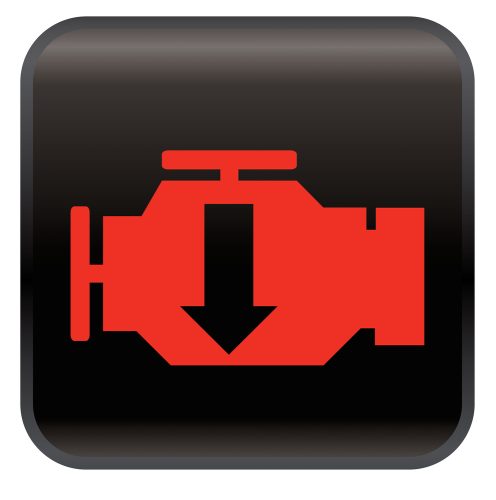
Most cars have the ability to go into what some know as limp mode and some call reduced engine power mode. It’s all the same thing – it means your vehicle’s computer has determined something is wrong enough in the system that it needs to take drastic action to make you sit up and take notice. You’ll immediately notice your truck is no longer accelerating as it should and, if you don’t stop, the computer can also cut off fuel delivery to the engine. You may also see a “check engine” or “reduced engine power” warning light on your dashboard.
This action is designed to stop whatever is wrong from causing further damage. In the Chevy Silverado – as in other vehicles – there are numerous reasons that can cause this to happen, but don’t panic. As long as you don’t drive too far in this reduced engine power mode, you can get it fixed. We are going to walk you through what may be the cause and how to make things right.
For some people who are DIYers when it comes to vehicle maintenance and repairs, finding the problem and fixing it may be done at home. Others may feel more comfortable having their trusted mechanic do the work. Let’s dive in.
Why Does This Happen with Chevy Silverados?
General Motors – as all smart companies do – takes advantage of bulk purchasing and that’s a good thing with hopefully savings passed on the consumer. However, it can be a not-so-good thing when one part that is in millions of cars and trucks singles itself out as a problem part.
From the years 1997-2007, a throttle position sensor (TPS) was installed in cars and trucks with the 2.2 L and the 4.3 L V-6 Chevrolet engines. That includes the Chevy Silverado. This little TPS sensor is not always the issue when the reduced engine power mode happens, but if you are savvy enough to check your diagnostic trouble codes (DTC) and you see a “p” or P0122, it indicates an issue with the TPS sensor and possibly bad connections.
Throttle body issues, a faulty pedal or throttle position sensor, circuit issues, and problems with the data network, engine, or cooling system are all reasons this warning message may appear.
Importance of Addressing the Problem Promptly for Safe Driving
We talked about how the reduced engine power mode is one way for your Chevy truck to protect itself, but it isn’t safe for you to drive your truck in this mode either. Some issues that could happen include a seized engine and/or an electrical fire.
How the TPS Works – and Symptoms of a Malfunctioning TPS
The throttle position sensor measures how much you push down on the gas pedal and relays that information to the throttle valve, which determines how much acceleration is needed. Once the valve knows, it allows more air to flow into the intake manifold for more acceleration. The TPS is mounted on the throttle body, which is where the valve is located.
The throttle position data tells the power train control module (PCM) when your transmission needs to shift. When the data is outside of a certain range, the PCM activates the check engine light. If you know how to check your engine light codes and you see P0122, you can pretty safely bet your problem is the TPS sensor circuit low. Another code for this area is P0124, which means the Chevrolet throttle position sensor intermittent operation.
Just a cautionary note: If you see that code and you know how to do it, you can replace your TPS and that may fix your problem. However, since there are many things that can cause your check engine light to come on or your Silverado to suddenly operate in reduced power mode, don’t always assume the TPS is the only issue you need to address.
Taking Preventive Measures
If you don’t want to see your Chevy totaled because of ownership error in not getting required maintenance and regular service, you’ll pay attention to those manufacturer recommended service and maintenance intervals.
Besides the reasons we mentioned above, other things that can cause your truck to go into limp mode include low engine oil, loose cables, clogged catalytic converter or clogged air filter and others. Getting your truck serviced regularly and taking advantage of regular preventive maintenance may help catch these things before they become a problem.
Regular Maintenance and Servicing
Chevy recommends servicing your vehicle every 7,500 miles or once a year, whichever comes first. Your owner’s manual can tell you exactly what needs to be done and when. Some of the things your dealership service department, or your favorite mechanic, will check include basic car maintenance, checking or replacing parts like spark plugs, wires, fluids, and serpentine belts and more.
But the really valuable reason you should do this is to catch any issues before they become a problem. With good luck and attention, you’ll have a great truck for many years. Keep in mind also: If your manufacturer has a recall, they may ask you to prove you have performed the required maintenance before repairing your vehicle. So, keep those records and receipts.
Using Quality Fuel and Following Recommended Fuel Grades
Because filter clogging from a dirty fuel mixture is a reason you may experience an engine power slowdown, purchase your gas from a reputable place and use the type and octane level your manufacturer recommends. Again, you can find this information in your owner’s manual.

Common Causes and Fixes for Chevy Silverado Engine Power Warning
We’ve talked about the TPS, what is does and why it can be the most common reason your Chevy truck suddenly goes limp. But there are numerous other reasons we need to look at for a comprehensive picture of the dreaded dashboard light indicators signaling something is wrong.
The reduced engine power light and/or check engine light means the engine is not getting enough power or torque to move the truck’s weight optimally (failing torque converter). It’s not always a faulty throttle body or sensors. Another cause includes low battery voltage, which can trigger the engine light that signifies reduced power mode, and this following list:
Clogged Fuel Filters and Injectors
Sometimes caused by poor maintenance or dirty gas, your fuel filters can become clogged. When that happens, gasoline is not getting to the engine as it should.
Malfunctioning Fuel Pump
As with the above, if your fuel pump stops working correctly, your motor will receive less fuel and will let you know with the check engine light, as well as possibly going into reduced power mode.
Faulty Fuel Pressure Regulator
Your fuel pressure regulator is a vital component since it controls the flowing pressure of the fuel. Engine performance issues are one of the first signs there’s something wrong with this component, although other signs include fuel leaks and smells, black smoke and a noisy fuel pump.
Faulty Ignition Coil or Spark Plugs
A problem here can cause a power malfunction, as well as other symptoms common to the ones we’ve described. However, you may hear your engine backfiring in addition to a loss in power.
Clogged Air Filter
A clogged air filter is typically the result of poor maintenance. If you drive in an area where it’s dusty, your air filter may need changing more often than regularly recommended service. Anytime the engine feels like it’s not getting enough air, it will let you know.
Faulty Mass Air Flow Sensor
The MAF sensor measures air flow into the engine. This is a component that works within the system to help deliver the appropriate amount of fuel to the motor. As with any problem that impacts the smooth operation of the correct amount of gas into the engine, this can also cause your dashboard to light up.
Blocked Catalytic Converter
Your catalytic converter is an important pollution control device. It works by reducing toxic particles that occur during the internal combustion engine operation into less harmful matter released into the air through the exhaust pipe. A blocked catalytic converter happens when your engine seals and valves are not working correctly and oil gets into the exhaust system.
The symptoms we’ve covered – poor acceleration and check engine light may present in this situation. You may also experience trouble starting the vehicle, a misfiring engine and the smell of rotten eggs.
Exhaust Gas Recirculation (EGR) Valve Malfunction
Your EGR functions as a pollution controller, as well as an engine efficiency booster and contributes to better gas mileage. It works by recirculating exhaust gases to the intake system. If you drive a diesel, this component can help reduce the engine knock common to those types of vehicles. Symptoms of failure include the ones we’ve discussed, as well as an increased knock.
How Much Does it Cost to Fix a Chevy Silverado with Reduced Engine Power?
Depending on what’s causing your issue, it could cost anywhere between $100 and $500. The problems described above are typically not expensive and even if you aren’t a DIYer, you shouldn’t have to pay too much for parts and labor.
The exception is repairs or replacement of the catalytic converter. That’s going to set you back around $2,000. You can help yours have a long life by taking advantage of routine maintenance, always using the correct fuel and oil for your truck and taking care not to use the wrong additives.
Protect Your Chevy Silverado with Freeway Insurance
Along with taking care of your truck by following recommended maintenance, you can also protect your pickup with insurance from Freeway. We’ve got affordable options for all budgets. Reach out online for a free and fast quote for truck insurance, give us a call at (800) 777-5620 or head over to one of our convenient locations. We are happy to help!



